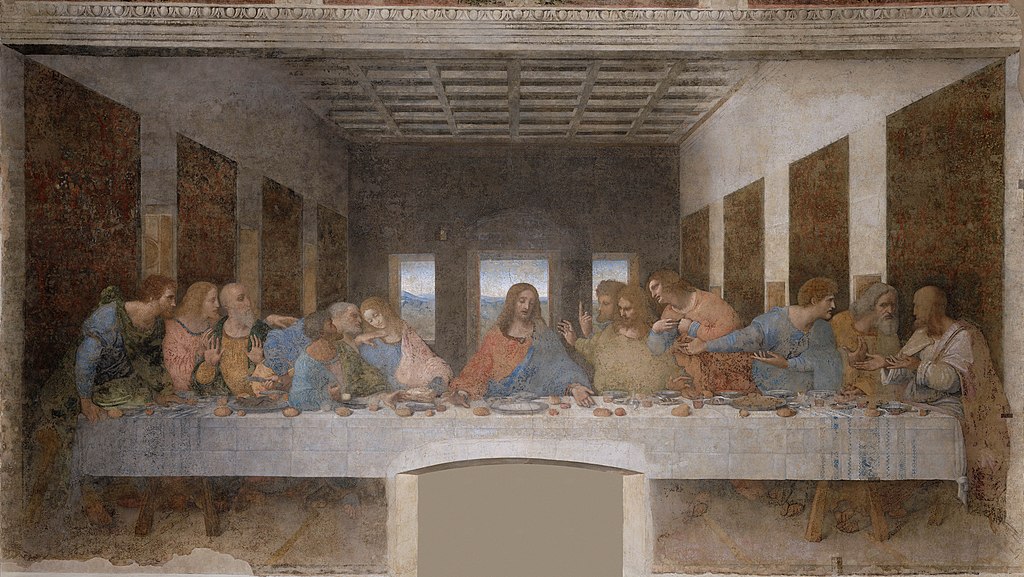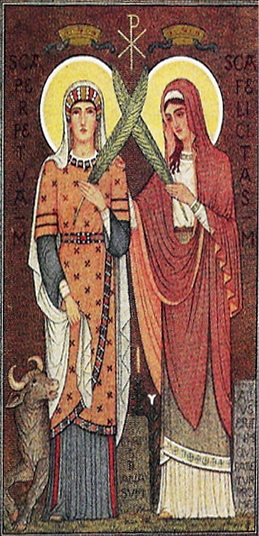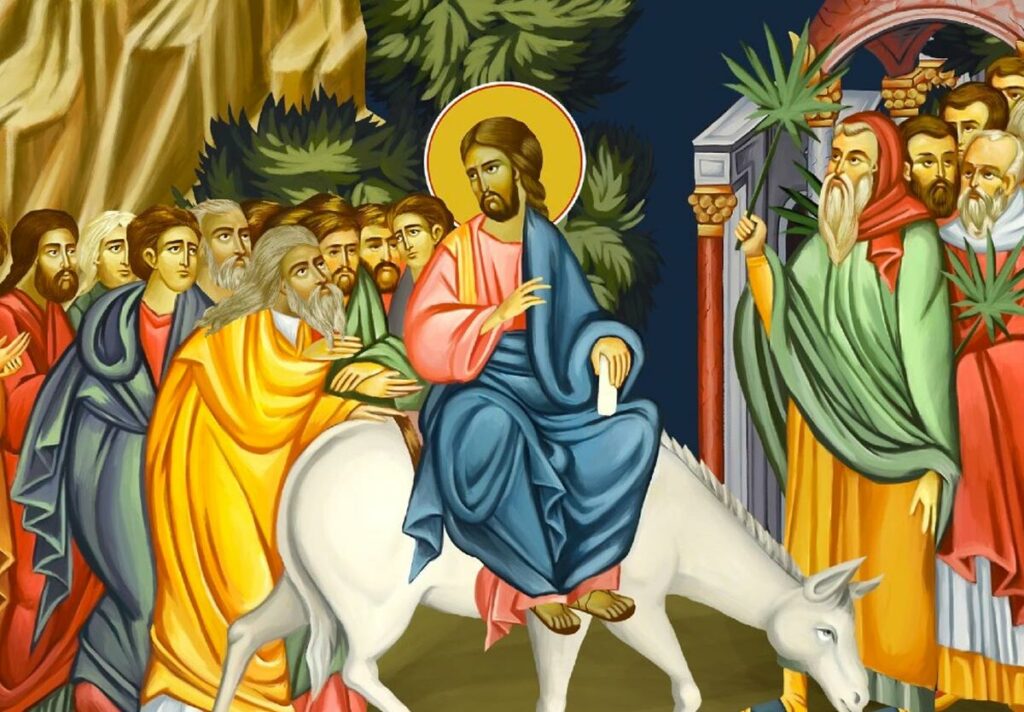Liturgical Living
for the month of March

by Heather Stewart
March is the Month of St. Joseph
Read on for a list of this month's feast days and ways you can celebrate them with your families. Find links for prayers, recipes, activities, and videos. Live your faith out loud!
March 1st: First Friday
This is a devotion made known to St. Margaret Mary Alcoque through a series of visions of Our Lord. A plenary indulgence is granted by the Church for completing this devotion which includes going to Confession, attending Mass, and receiving Communion on the first Friday of the month for nine consecutive months. A complete list of the promises Jesus makes to those who practice this devotion, as well as video instructions for completing it, can be found here.
March 2nd: First Saturday

In 1925, The Blessed Virgin Mary reappeared to the principal seer of Fatima, Lucia dos Santos, and requested the propagation of this devotion which consists of going to Confession, receiving Communion, praying the Rosary, and meditating on all the mysteries of the Rosary for 15 minutes on the first Saturday of the month for five consecutive months. Complete written instructions for the devotion can be found here, and video instructions can be found here.
March 3rd: Fifth Sunday of St. Joseph
It has long been customary in the Catholic Church to prepare for the Feast of St. Joseph by dedicating to him the seven Sundays preceding his feast day, which is March 19th. We spend these weeks recalling the seven sorrows and seven joys of St. Joseph. This is as simple as adding some special prayers to your day on each of these Sundays. You can find meditations for all seven weeks here. You can also pray The Litany of St. Joseph.
In my Village, we add the prayers for St. Joseph from Kendra Tierney’s monthly prayer books to our meal time prayers at dinner. We bless the food, and then the kids are allowed to start eating while I read the St. Joseph meditation. Letting them eat while you talk is a great strategy for getting them to sit still and actually listen! If you wanted to use these specific devotions, you need both the February and March books since the seven Sundays are in both months. Catholic All February is still available on Amazon, and Catholic All March is available as a digital download on Kendra’s website. The February book is also available to download if you prefer that. Personally, I like real books.
March 7th: Sts. Perpetua & Felicity
Perpetua was a young noblewoman in the Roman province of Carthage in North Africa. She was the daughter of a pagan father and a Christian mother, and she also had an infant son. Felicity, her maidservant, was eight months pregnant when the two women were arrested along with three other male companions for refusing to renounce their Christian faith.
Roman law forbad the execution of pregnant women, but Felicity gave birth in prison, and all five prisoners were sent to die in the arena as a birthday gift for Emperor Septimius Severus. Perpetua kept a journal while the group was imprisoned, which still survives today. It’s quite short, and you can read it here. The account of the group’s martyrdom was completed by a witness.
Perpetua and Felicity are the patronesses of mothers, expectant mothers, ranchers, and butchers. The women were ultimately both gored by a cow in the arena, so I thoroughly endorse revenge burgers for dinner tonight. I also eat revenge burgers every time the Texas Longhorns beat the Oklahoma Sooners. Boomer Sooner! There are also some Tunisian recipes at the bottom of this page. And, there’s a coloring sheet for the kiddos right here.
March 9th: St. Catherine of Bologna
Catherine of Bologna was born to a wealthy family in Bologna, Italy on September 8, 1413. She had the best education her parents’ money could supply, and she was particularly gifted in painting, Latin, and the viola. Feeling called to the religious life, she entered the convent of Corpus Domini at Ferrara in 1426 at just 13 years old.
In 1432, Catherine founded a monastery of the Order of Poor Clares with several other young women from Ferrara. In the convent Catherine worked as a laundress, baker, and caretaker for the animals. She never shied away from humble tasks. Eventually, it became Catherine’s responsibility to provide pastoral care and spiritual direction to all the sisters at the Ferrara convent, and the community developed a reputation for holiness and austerity.
Upon returning to Bologna with her superiors in 1456, Catherine was asked by the governors there to found an additional Poor Clares monastery and serve as its abbess.
During the last years of her life, Catherine continued to paint and write. She is the author of the Treatise on the Seven Spiritual Weapons Necessary for Spiritual Warfare, which are as follows:
“(1) to be careful always to do good; (2) to believe that we can never achieve anything truly good by ourselves; (3) to trust in God and, for His love, never to fear the battle against evil, either in the world or in ourselves; (4) to meditate frequently on the events and words of Jesus’ life, especially His passion and death; (5) to remember that we must die; (6) to keep the benefits of heaven firmly in our minds; (7) to be familiar with Holy Scripture, keeping it in our hearts to guide all our thoughts and actions.”
Catherine’s painting, St. Ursula and Her Maidens can still be viewed today at a gallery in Venice.

Catherine fell ill during the Lenten season of 1463 and passed away on March 9th of that year. She was initially buried without a coffin, but, when people began to attribute cures to her and to talk of a sweet-smelling aroma coming from her grave, her body was exhumed. The body was found to be incorruptible and continues to remain so, although the skin has blackened from the continual exposure to soot and oil lamps. Catherine’s body, dressed in her religious habit, can be seen at the chapel of the Poor Clares in Bologna. She is the patron saint of Bologna, artists, liberal arts, and against temptations (source). She’s also my niece’s Confirmation saint.
An authentic Bolognese sauce strikes me as the perfect choice for this feast day, but you’re going to be in your kitchen for a hot minute as the recipe estimates a total time of 3hrs20mins for preparation and cooking. Check out this very cool paint by number of the Holy Family for a fun activity today!
VIDEO: About St. Catherine of Bologna
March 10th: Laetare Sunday/Sixth Sunday of St. Joseph
Laetare Sunday

Congratulations! You’ve made it halfway through Lent! Laetare is a Latin word that means rejoice. It comes from the introit (entrance antiphon) for today’s Mass, which reflects on Isaiah 66:10-11. Rejoice with Jerusalem and be glad because of her, all you who love her; Rejoice with her in joy, all you who mourn over her—So that you may be satisfied from her consoling breast; That you may drink with delight at her abundant breasts!
Easter, is coming, y’all! Today, Holy Mother Church encourages us in the midst of our fasting. You’ll see Father wearing rose vestments, which only happens twice per year (today and Gaudete Sunday during Advent). Although the General Instruction of the Roman Missal forbids flowers on the altar during Lent in most cases, flowers are permitted on Laetare Sunday (and on other solemnities falling during the season). Be of good courage, brothers and sisters. The light of Easter isn’t far now.

Sixth Sunday of St. Joseph
See above under Fifth Sunday of St. Joseph.
March 15th: St. Longinus

Longinus was the Roman centurion who pierced Jesus’ side during the crucifixion. He suffered from near blindness, but when some of the blood and water from the Lord’s body fell into his eyes, he was miraculously healed, causing him to cry, “Indeed, this was the Son of God!” After this, Longinus converted. He left the army and joined the apostles, seeking their direction. Eventually, he became a monk in Cappadocia.
Ultimately, Longinus was arrested and martyred for his faith. His teeth were forcibly extracted, and his tongue was severed, yet he continued to speak clearly. He was also able to demolish several idols in front of the governor who was struck blind by the demons escaping the idols. When Longinus was beheaded, some of his blood splashed into the governor’s eyes, and his vision was restored.
Because Longinus died in Mantua (Mantova in Italian), this page suggests a recipe for sausage tortellini that is popular in the region (Scroll down the page.). Since Longinus was converted by a personal encounter with Christ, if you have any family members who are not cradle Catholics, it would be a great day to talk about their conversion stories as a family! We can also talk to our children about the fact that even those who are already Catholic are still called to conversion. Conversion is a lifelong process by which we achieve an ever-deepening friendship with our Lord.
March 17th: St. Patrick/Seventh Sunday of St. Joseph
St. Patrick
Now, y’all know your Irish DRE is going to have plenty to say about the Solemnity* of St. Patrick! Strap in, kids!
Patrick was born in the fifth century to a Catholic family in Roman Britain. When he was about 16 years old, he was abducted by Irish pirates and taken to Ireland where he was made to work as a slave herding and tending sheep. At this time in history, Ireland was peopled by Druid pagans, but Patrick leaned into his Catholic faith during his captivity. He wrote an autobiography entitled, Confession, which survives today. In it, the saint recounts praying as many as one hundred times each day.
Patrick’s enslavement came to an end when, at age 20, he received a dream from God telling him to flee to the coast where he would find a boat waiting for him. He did, indeed, find the boat as well as some sailors who ferried him back to Britain where he was reunited with his family. After a few years at home, Patrick received another vision wherein a man named Victoricus came to him from Ireland carrying many letters, which contained the pleadings of the Irish people for Patrick to return to them.
This vision inspired Patrick to study for the priesthood. He was ordained by St. Germanus and was later elevated to bishop. The new bishop was sent back to Ireland to spread the Gospel message. He arrived in Slane, a village in County Meath, on March 25, 433. He spent the next three decades working tirelessly to teach the Irish about the Catholic faith. Entire kingdoms were converted by his teaching. He built churches across the country and famously used the shamrock to explain the Holy Trinity. Patrick died on March 17, 461.
In Irish, the saint’s name is Pádraig (Paw-drig), which is why you’ll often hear St. Patrick’s Day referred to as, “St. Paddy’s.” Please, do not refer to it as, “St. Patty’s.” Patties are for burgers. During his lifetime, Patrick composed a famous prayer known as the “Breastplate” or the Lorica of St. Patrick. This is the perfect prayer to celebrate his feast! Catholic Icing has a ton of St. Patrick's Day crafts for kids, and I love this picture book about one of St. Patrick’s most famous legends. If you have never watched Riverdance, you are missing out! Make sure you watch all the way to the end for the encore(s)!
You can see Irish dance locally for free this St. Paddy’s season by coming out to any of the shows put on by the Carpenter Academy of Irish Dance. Three of my kids are currently dancing with the school, but Oonagh has taught all five of my babies at one point or another. She always offers a free trial class in case you want to come join us when you see how much fun these dancers are having! See the schedule of this year's shows below.


If you need a great playlist for your St. Paddy’s party, here is a link to my playlist of traditional Irish music on Spotify. The playlist is called Mo Anam Cara, which is Irish for “my soul mate,” because, after God, Ireland is my first and best beloved. My favorite Irish language song is this one below performed by the Choral Scholars of University College Dublin. The song is called, Mo Ghile Mear, which means, “my gallant hero.”
Okay, so let’s talk about your menu. You might remember from St. Brigid’s Day last month that corned beef and cabbage isn’t actually Irish. You’re welcome to eat that if you like, but that’s definitely not what we’re having in my Village. My go-to St. Paddy’s dinner is Dublin Coddle. This recipe is a little different than the one I’ve been using for years, which has no garlic or leeks. I think it would be fine to add those things, but what I’m already making is so over-the-top delicious, and, you know, “if it ain’t broke, don’t fix it.” I also never measure my chicken broth. I just pour until it just covers the potatoes, and I end up using most of two boxes. And, I use an entire bunch of curly parsley, which is more than the recipe says to use. I am also usually doubling (or even tripling) this recipe to feed my Village. The size of my Dublin Coddle pot is truly a thing to behold. You have to have a good, crusty bread to go with this. If you don’t want to bake bread yourself, I recommend the Chicago hard rolls from the Publix bakery, but I’ll be making my Granny’s soda bread. See the recipe below:

For dessert, I have a few recipes that I go back and forth between from year to year. This year, my Village has already requested a Bailey's Chocolate Poke Cake, but other great options are this dark chocolate Guinness cake with Bailey's cream cheese icing or this Bailey's cheesecake or the apple crumble we talked about last month for St. Brigid. If you’re going to make that one, remember to use your Kerrygold butter and McCann's Irish oatmeal. I typically use Tullamore D.E.W. for the whiskey because that’s what I have around most often, but any Irish whiskey will do. Please, do not use scotch. Serve with vanilla bean ice cream!
*St. Patrick is the patron saint of Ireland, so, in Ireland, the feast is elevated to a solemnity. In the US, it’s an optional memorial. However, St. Patrick is also the patron saint of my family, so it’s a nudge-nudge-wink-wink solemnity in my house. Recall that we don’t do penance on solemnities, even if they fall during Lent, so we always forgo our voluntary penance for St. Paddy’s. It’s on a Sunday this year anyway, though, so skip your penance with me, and enjoy! Sláinte (Slawn-chuh, Irish for “cheers”)!
Seventh Sunday of St. Joseph
See above under Fifth Sunday of St. Joseph
March 19th: ST. JOSEPH
Okay, this one is a solemnity everywhere! That means your voluntary Lenten disciplines are abrogated. When this solemnity falls on a Friday, it also trumps the obligation to abstain from meat. No penance on solemnities!
Very little is known about St. Joseph. Indeed, Scripture attributes no words to him at all. His last appearance in the Bible is finding the 12-year-old child Jesus in the temple in Jerusalem. Because St. Joseph is never seen during the course of Jesus’ public ministry, it is believed that he died some time before the Wedding at Cana. He would have died in the presence of Jesus and Mary, and, for this reason, he is the patron of a happy death among other things.
We often hear St. Joseph described as the “foster father of Jesus.” While God the Father is the biological father of Jesus, St. Joseph is Jesus’ father just as much as any man would be if he adopted a son. Jesus’ relation to King David is traced through Joseph, not Mary. Jesus was fully God, but He was also fully man. The human child, Jesus, needed a father to teach him, to be an example for him, to protect him, to love him. St. Joseph did all these things (Tierney, 2018).
Although St. Joseph was from Israel just like Jesus and the Blessed Mother, many of the best-known traditions for celebrating his feast day come from Italy. There is a Sicilian tradition known as “St. Joseph’s Altar,” or La Tavola di San Giuseppe that involves a three-tiered table representing the Trinity that is covered in breads, pastries, and other foods. It is elaborate and beautiful, and, real talk, I am never going to have time to do one. Did you read everything I just cooked for St. Paddy’s two days ago? But, if any of y’all are Italian and want to embrace your heritage, I would love to come over if you’re doing this! You can totally come to my St. Paddy’s shenanigans! This video shows an example of a St. Joseph’s Altar that is done annually in New Orleans, and this website includes several recipes for foods that are traditional for the altars including zeppole di San Giuseppe (cherry cream puffs), which I’m given to understand are a must. There is mention of the fact that fish is often used in place of meat since this feast always falls during Lent. If you want to use fish for the sake of tradition, go for it, just remember: This feast is a solemnity, and meat is always okay on solemnities!
If the St. Joesph’s Altar doesn’t fit into your budget or schedule, you can always just make any Italian meal that your family fancies. I’ve made this chicken marsala recipe a few times and can vouch for it. And, while I probably don’t have any street cred here since I’m not Italian, this is the best lasagna I’ve ever had, and you can make it ahead of time, which I love. I always use the Barilla oven-ready lasagna noodles, Ragu marinara (mama’s special garden sauce or chunky mushroom and green pepper), and Classico pizza sauce.
Since St. Joseph was a carpenter, making a birdhouse might be a fun activity to do with the kids today. If working with tools isn’t your skill set, you can also build one out of craft sticks.
March 23rd: St. Rafqa
Here’s your super obscure saint for March! Rebecca Pierrette Ar-Rayes, also known as Rafqa, is the patron of lost parents and the sick and is also the Confirmation saint of another of my nieces.
St. Rafqa was born in 1832 in Lebanon. She was an only child, and sadly lost her mother at age six. Her father remarried a woman with whom Rafqa did not get on, and at age 14, she told her father that she wanted to be a nun. Her father did not support this, but she joined the Order of the Immaculate Conception at age 21 anyway. Later, her order merged with another, and she joined the Order of St. Anthony of Maronites.
Rafqa prayed for a share in the sufferings of Christ, and, beginning in 1885, she experienced severe pain in her eyes and brow, which ultimately resulted in her blindness. While the pain persisted, she also experienced bleeding from her eye sockets and constant nosebleeds. Her condition continued to worsen, and, by 1907, she was nearly paralyzed, yet, despite her pain, she frequently found the strength to crawl to the chapel in her monastery to pray. She suffered all of this without complaint.
While enduring tuberculosis, she had prayed for one hour of sight in order to see her superior, Mother Ursula, and this favor was granted. She was able to dictate her autobiography before her death in 1914 (source).
This website offers a few Lebanese recipes (scroll to the bottom) if you’re in the mood to try something new tonight.
March 24th: PALM SUNDAY
WELCOME TO HOLY WEEK, FRIENDS!!! The last Sunday of Lent is Palm Sunday. Palm fronds are distributed at Mass to remind us of Jesus’ triumphant entrance into Jerusalem. These are sacramentals—objects of ecclesiastical origin intended to aide in devotion. The palms are blessed, so they cannot be thrown away. You can return them to the Church, and they’ll be burned for next year’s Ash Wednesday ashes, OR you can burn or bury them at home. If you choose to burn the palms, the ashes should be spread outside, thus returning them to nature.
Palm Sunday is also the Sunday when we hear the really long Gospel reading. It’s Jesus’ entire Passion, and we get to participate by shouting, “Crucify Him!” at the appropriate times. I don’t know about you, but this always turns my stomach a little. I think, “I would never crucify Jesus.” But, the truth is that I have, I do, and I will again. And, so will you. Jesus was crucified for our sins. Yours and mine. We all had a share in nailing Him to that cross, and I think it does us good to remember that. The priest also wears red vestments to remind us of the suffering of Jesus.
Kendra Tierney suggests Middle Eastern food and a palm heart salad for dinner tonight; however, March 24th is one of my bestie’s birthdays, so our Village will be observing our “Birthday Sunday” tradition wherein anyone having a birthday in a given week chooses dinner and dessert for that Sunday. It’s extra fun when the birthday actually falls on Sunday!
VIDEO: How to Make a Palm Cross
March 25th: Monday of Holy Week (Normally Annunciation)
March 25th is usually the Annunciation (when Gabriel appeared to Mary to ask her to be Jesus’ mother), but since it’s Holy Week, that feast gets pushed out to April 8th, after the Easter Octave. Check back next month for all my Våffeldagen traditions. Spoiler alert: They’re fun and delicious.
Monday of Holy Week is a great time to do spring cleaning and prepare your home for Easter.
March 26th: Tuesday of Holy Week
Finish your cleaning. Plan your Easter menus. Easter is a big deal. Use these last few days of Lent to prepare for it! Don’t forget to pray!
March 27th: Spy Wednesday
On this day we remember Judas’ betrayal of Jesus for 30 pieces of silver (Matthew 26:14-16). If you’d like to teach your children about greed and how it can affect us, try hiding 30 quarters (“pieces of silver”) in your house, and let them race to find them. If your kids are always super nice to each other and love sharing, this probably won’t work. My kids are normal, so it works great.
A word to Judas sympathizers (Believe it or not, they exist.): When Jesus foretells the betrayal, and even tells Judas to do it quickly (John 13:21-30), this should in no way be understood as an instruction from Jesus for Judas to betray Him. As Kendra Tierney wrote, “All it means is that Jesus, as God, can see that Judas’ free decision has been made. Judas could have chosen differently (p. 190).” John tells us that, “after he took the morsel, Satan entered him (John 13:27).” Satan can only enter us if we allow it, if we open ourselves to it, if we choose it. In choosing to betray his rabbi and his friend, Judas chose to allow Satan to enter him.
Later, when he regrets what he’s done, Judas tries to return the money to the chief priests, then he immediately goes and hangs himself (Matthew 27: 3-5). This is the ultimate sin of pride. In despair, and believing his sins too great for God’s mercy, he pronounces and carries out his own sentence.
Conversely, Peter, who also betrayed Jesus, not only regretted his actions but “wept bitterly” for them (Luke 22: 60-62), and he waited. He waited on the Lord’s mercy. He was reconciled with Jesus, and that, friends, that seemingly small but oh-so-big difference, is how you become the first pope instead of history’s greatest villain.
On the evening of Spy Wednesday, the Church also observes a tradition known as, Tenebrae, which is Latin for “shadows” or “darkness.” In a Tenebrae service, the church is gradually covered in total darkness as the altar candles are extinguished one-by-one. When the last candle is put out, there is a loud BOOM representing the strepitus (earthquake) that happened at the moment of Christ’s death. This boom is the official end of Lent and the beginning of the Triduum (Tierney, 2018).
March 28th: Holy Thursday

Although Lent is now over, and we are in the Holy Triduum, this is not the time to abandon our Lenten disciplines. That doesn’t happen until after the Easter Vigil on Holy Saturday or the morning of Easter Sunday, depending which Mass you attend.
Holy Thursday is the Mass of the Lord’s Supper. After the Gloria at this Mass, the organ and bells are silenced, not to be used again until the Easter Vigil.
Holy Thursday recalls the Passover meal that Jesus shared with his disciples on the night before he died. During this meal Jesus instituted both the Eucharist and the priesthood.
March 29th: Good Friday

On this day we remember Jesus’ suffering and death. No Masses are celebrated. Ideally, you would be fairly silent from 12:00-3:00 PM while Christ is hanging on the cross, but in my homeschooling years, when my kids were mostly little, that wasn’t a realistic expectation. In an effort to get them to be at least a little quiet, so I could pray, I used to give them Stations of the Cross coloring sheets. The older kids were allowed to read. Sometimes, if the babies were feeling benevolent, they would nap. In general, I did not allow TV or video games, and I stayed off my phone. The exception was when we watched Fatima together. It’s rated PG-13, but I felt comfortable having even small children watch it. Your mileage may vary. I just figured that if the kids were watching a movie, at least they weren’t making any other noise (mostly), and this is a beautifully done film that is faith-based. It used to be on Netflix and might still be, but I know for sure that it’s available on Prime.
Dinner for the kids is very simple tonight, usually grilled cheese or frozen fish sticks. After the younger kids go to bed, adults and big kids watch The Passion of the Christ. Yes, every year. It never gets easier to watch, and we all always cry, and I think that’s okay. I think it’s important to be reminded of what this day really is. It’s important to witness what Christ suffered for you. Yes, you should feel bad about that. Yes, you should cry about that. But, you should also realize how much He loves you. HE. LOVES. YOU. He suffered His Passion and death for you. Personally, I am on board with anything that helps me remember that.
March 30th: Holy Saturday Easter Vigil
Much like Christmas Eve, Holy Saturday is a day of intense preparation for me. The house gets cleaned, and the food for Easter Sunday gets made. As an RCIA alumna myself, I have a very tender place in my heart for new converts. We always attend the Easter Vigil with all the kids. Yes, it’s long. They’re fine. I promise.

The vigils of great feasts were traditionally days of fasting in the Church, and I try to stick to that for my family. Obviously, the kids don’t fast, but their pre-Vigil dinner is meatless. I don’t have a go-to. It’s whatever I can throw together for them after cleaning and cooking all day before I have to start getting everyone dressed for Mass. In fairness, they mostly dress themselves at this point, but there’s always someone who can’t find her tights, thinks wearing a cardigan is the worst thing that’s ever happened to her, needs help with a curly mop, or is having a knock-down-drag-out screaming match with a sibling. Life at my house is not boring.
So, what was I cooking all day? Well, we spend Easter Sunday with our Village at Nana & Papa’s house, and I have assignments. I make the the best deviled eggs you've ever had, this pasta salad (I use original Olive Garden dressing), and usually some type of dessert. One year I did cupcakes with all different pastel-colored buttercream (pictured below), but really I’ll bake whatever sounds good to me when I’m grocery shopping during Holy Week. Stay tuned for pictures of this year’s dessert if you follow me on Facebook! At some point during the day, we have also dyed eggs, usually in the afternoon.

March 31st: EASTER SUNDAY OF THE RESURRECTION OF THE LORD
HE IS RISEN!!! ALLELUIA, ALLELUIA!!!
Because we went to Mass last night, we get to sleep in today. The kids wake up to their Easter baskets, which always include swimsuits and sandals. This allows me to buy them something I was going to buy anyway, and they still feel like they’re getting presents. The baskets are, of course, also filled with treats. I cook a breakfast so big that we typically skip lunch, and some time in the afternoon, we head over to Nana and Papa’s.
Papa makes lamb chops. The rest of the Village brings other foods to share. There is often a bounce house for the kids (so many kids), and we do a huge Easter egg hunt. Each family brings candy-stuffed plastic eggs to hide. In recent years we have been known to stuff a couple gold eggs with cash in order to get the teenagers to participate in the egg hunt.
It's a day saturated with joy and spent among the family we’ve chosen. In the words of Pope St. John Paul the Great, “We are an Easter people, and alleluia is our song.”
Other Feasts in March:
March 1st: St. David
March 2nd: St. Agnes of Bohemia
March 3rd: St. Katherine Drexel
March 4th: St. Casimir
March 5th: St. John Joseph of the Cross; St. Piran
March 6th: St. Baldred; St. Colette
March 8th: St. John of God
March 9th: St. Frances of Rome
March 10th: St. Anastasia the Patrician
March 11th: St. Constantine
March 12th: St. Fina
March 13th: St. Christina of Persia
March 14th: St. Matilda
March 15th: St. Louise de Marillac
March 16th: St. Eusebia; St. Heribert of Cologne; St. Urho
March 17th: St. Gertrude of Nivelles
March 18th: St. Edward the Martyr; St. Cyril
March 20th: St. Cuthbert; St. Photina
March 21st: St. Edna of Aran
March 22nd: St. Lea; St. Nicholas Owen
March 23rd: St. Turibius of Mogrovejo
March 24th: St. Aldemar; St. Óscar Romero; Gabriel the Archangel
March 25th: St. Dismas
March 26th: St. Margaret of Clitherow
March 27th: St. Rupert
March 28th: St. Conon of Naso
March 29th: St. Berthold of Carmelites
March 30th: St. Osburga
March 31st: St. Balbina; St. Benjamin
I encourage you to do some research on any of these that may be important to your family. Catholic culture is universal AND personal. Celebrate the feasts that are significant to you. Our faith is super fun!
Recommended FREE Catholic apps for iPhone and Android:
Laudate: The most comprehensive Catholic app: daily readings, prayers, podcasts, rosaries, and more!
iBreviary: brings the traditional Catholic prayer of the Breviary and all the texts of the Liturgy to your device
References:
Tierney, K. (2018). The catholic all year compendium: Liturgical living for real life. Ignatius Press.














